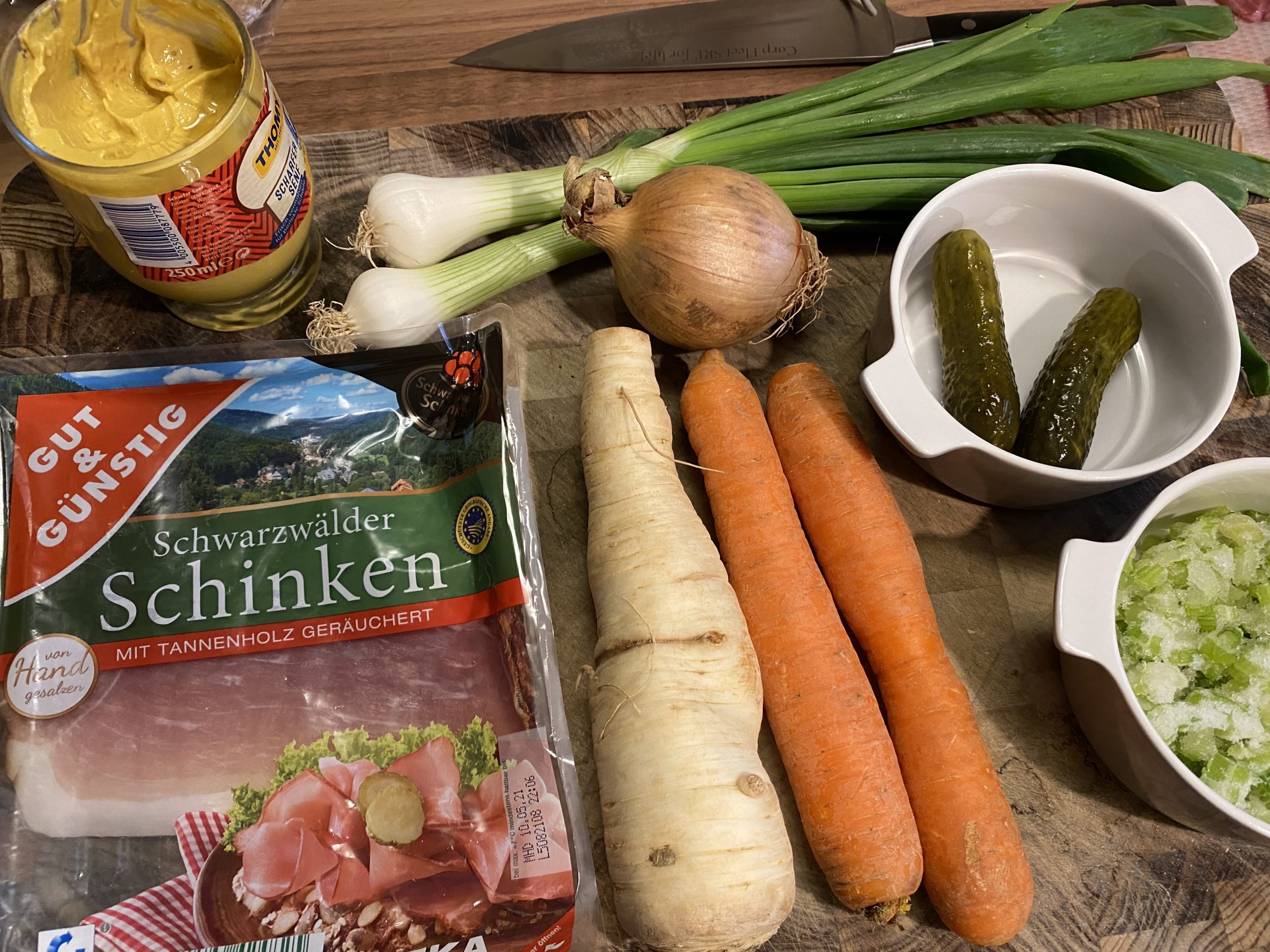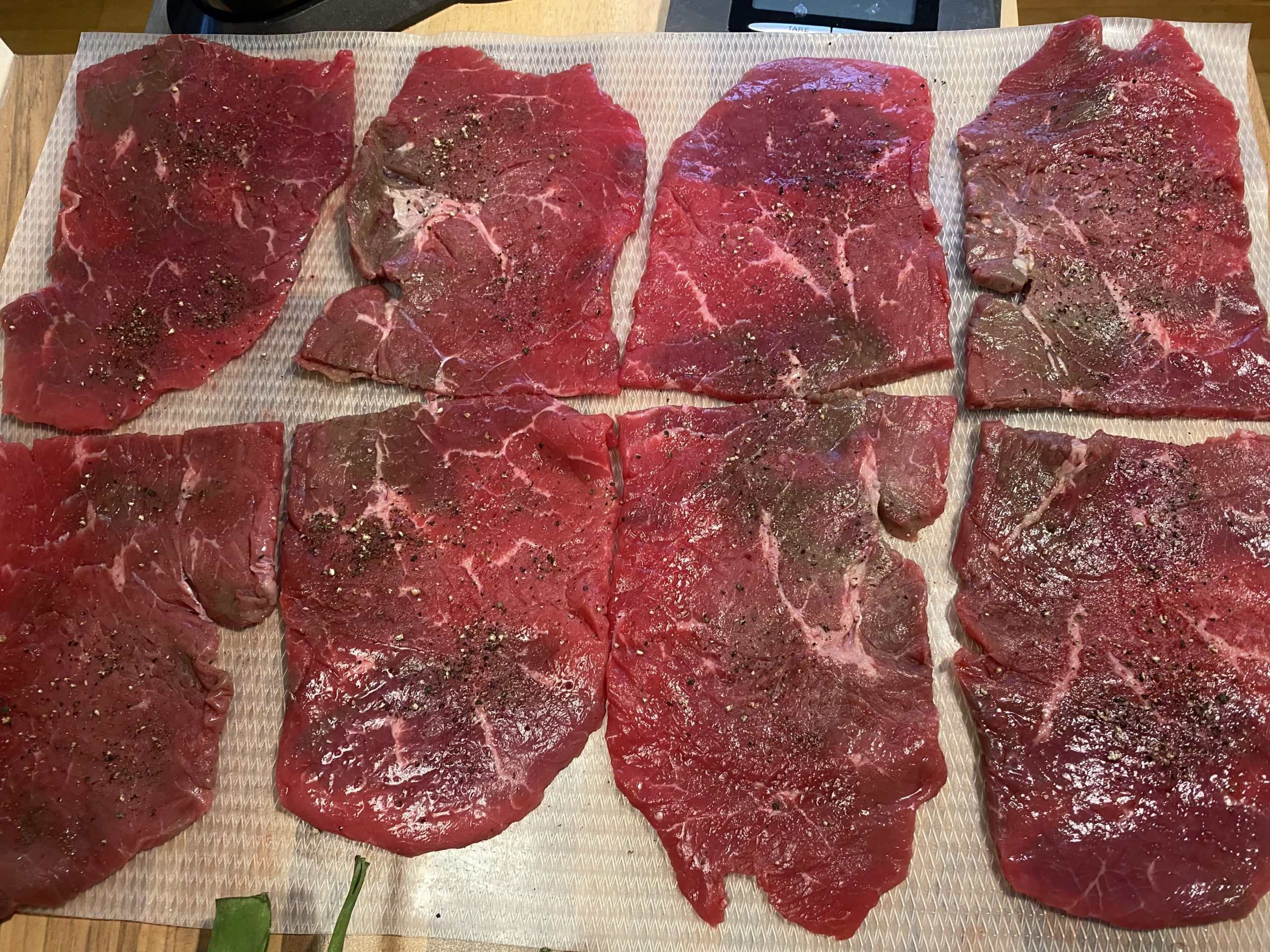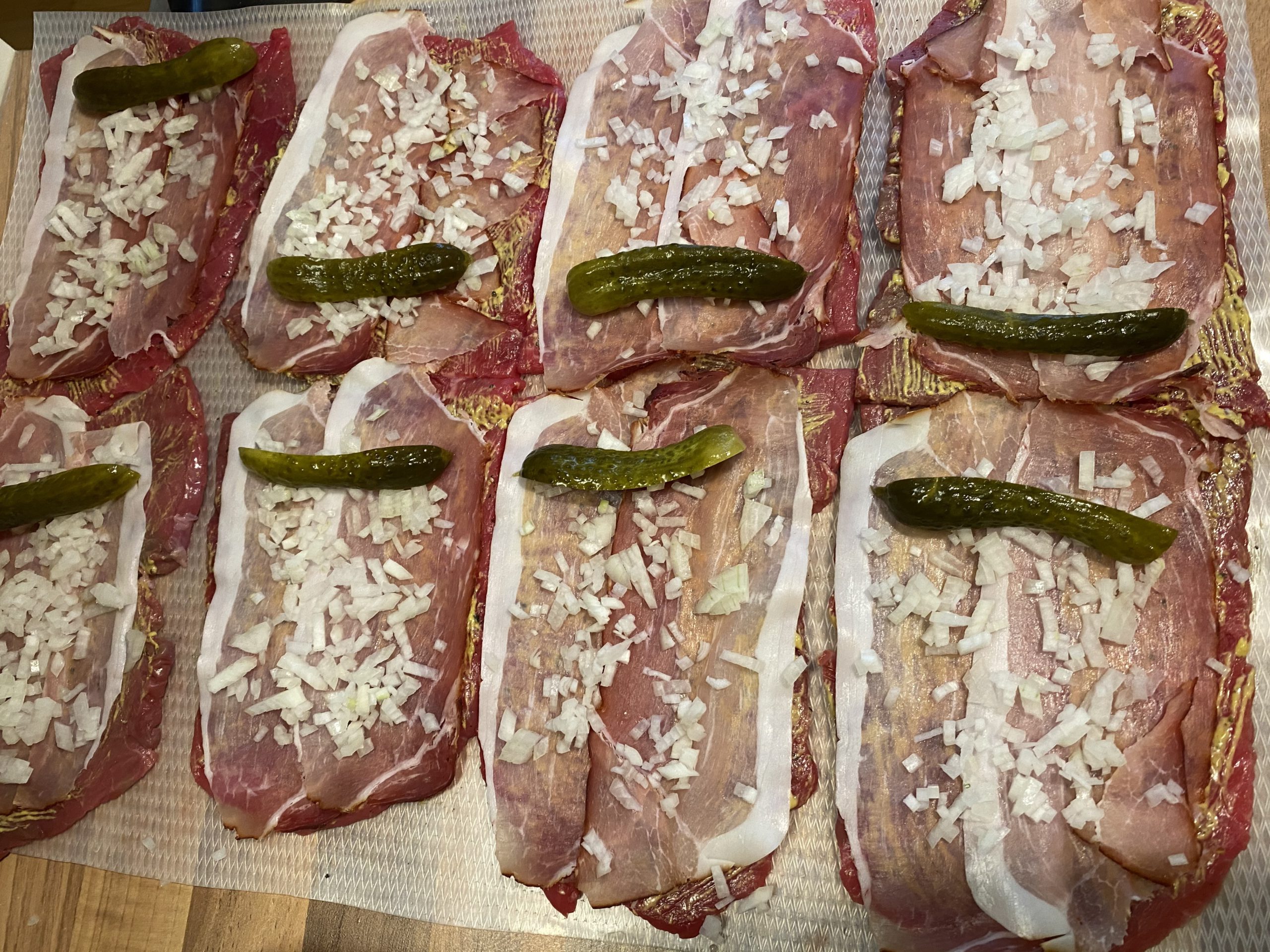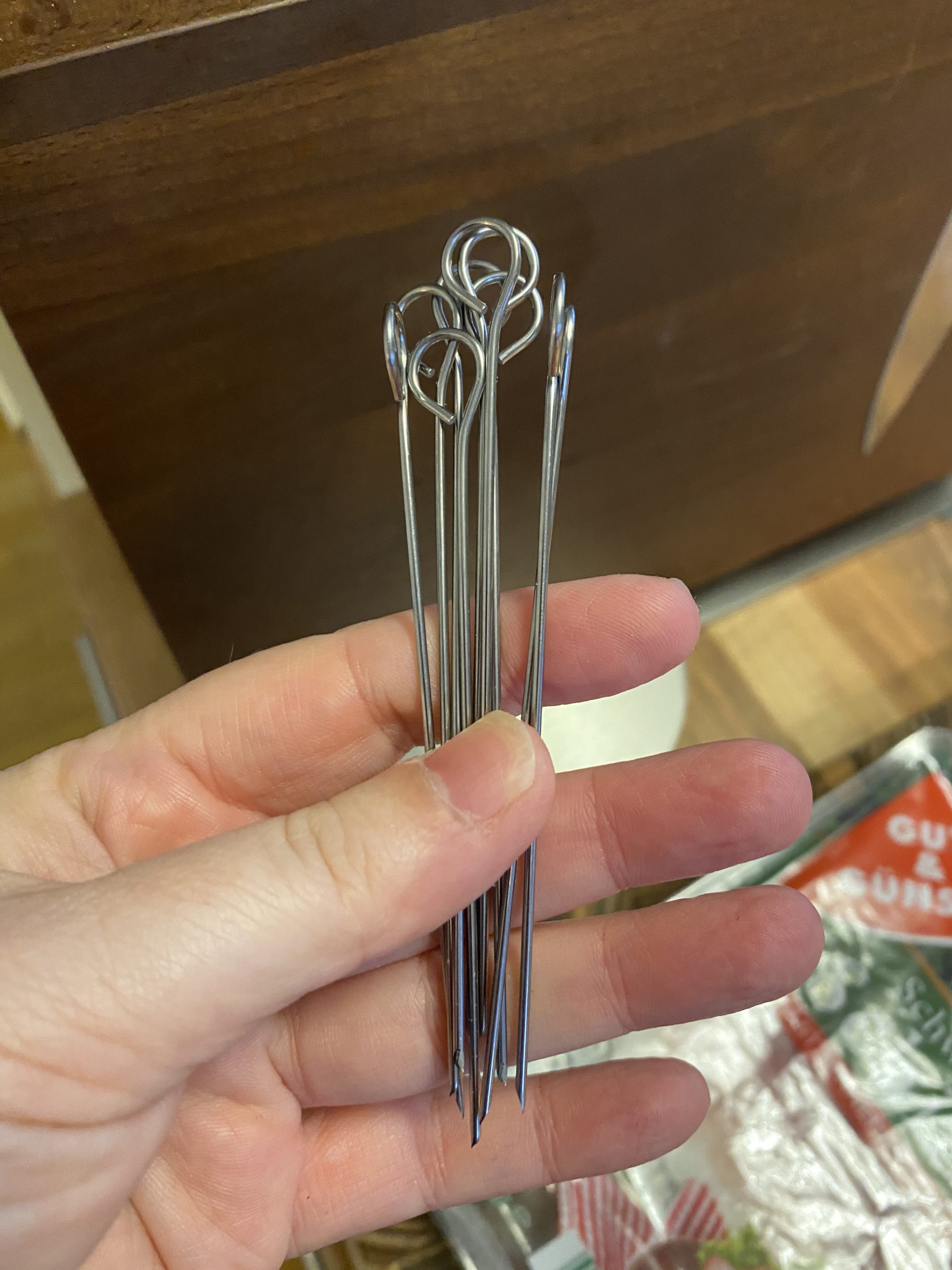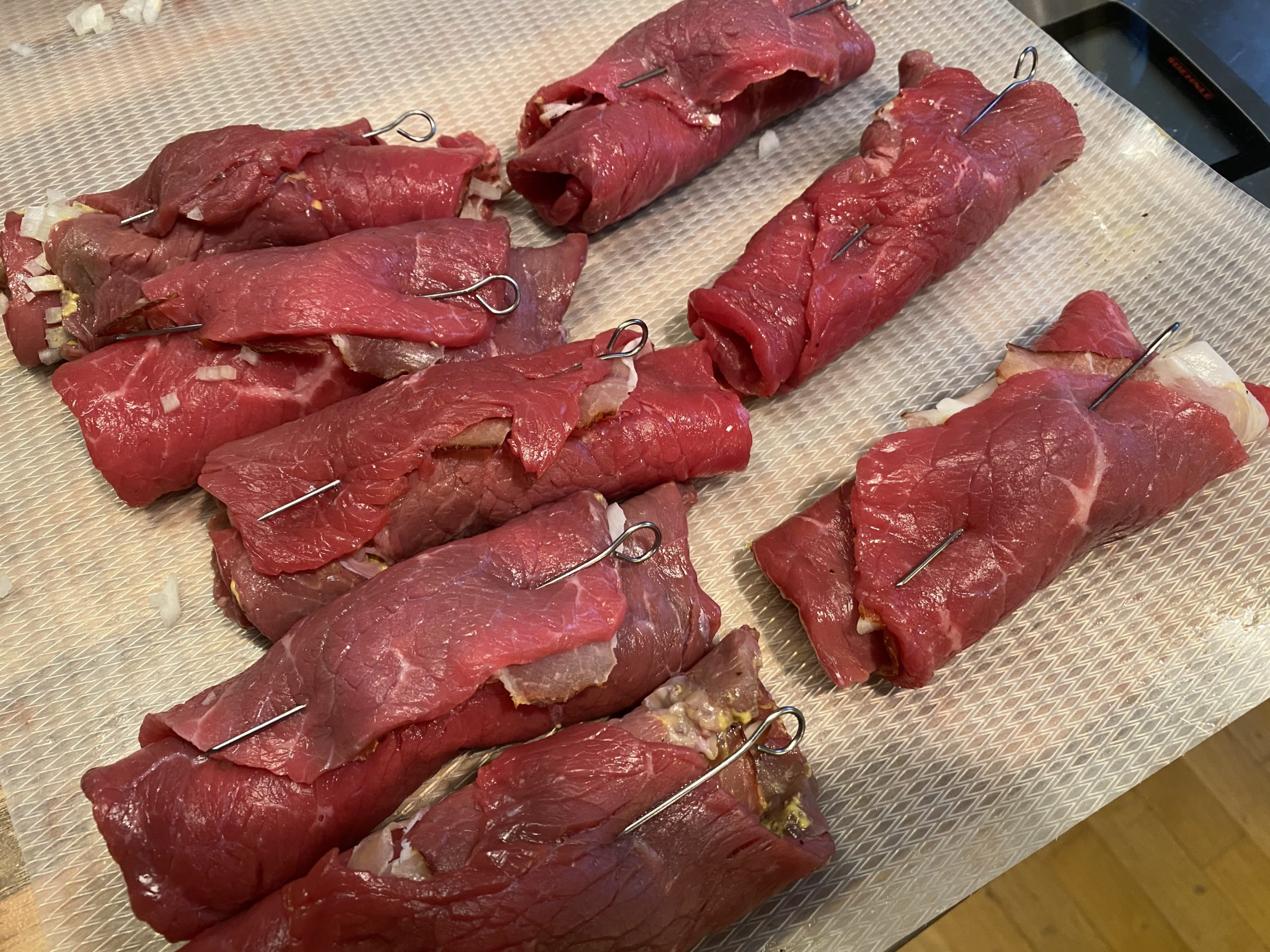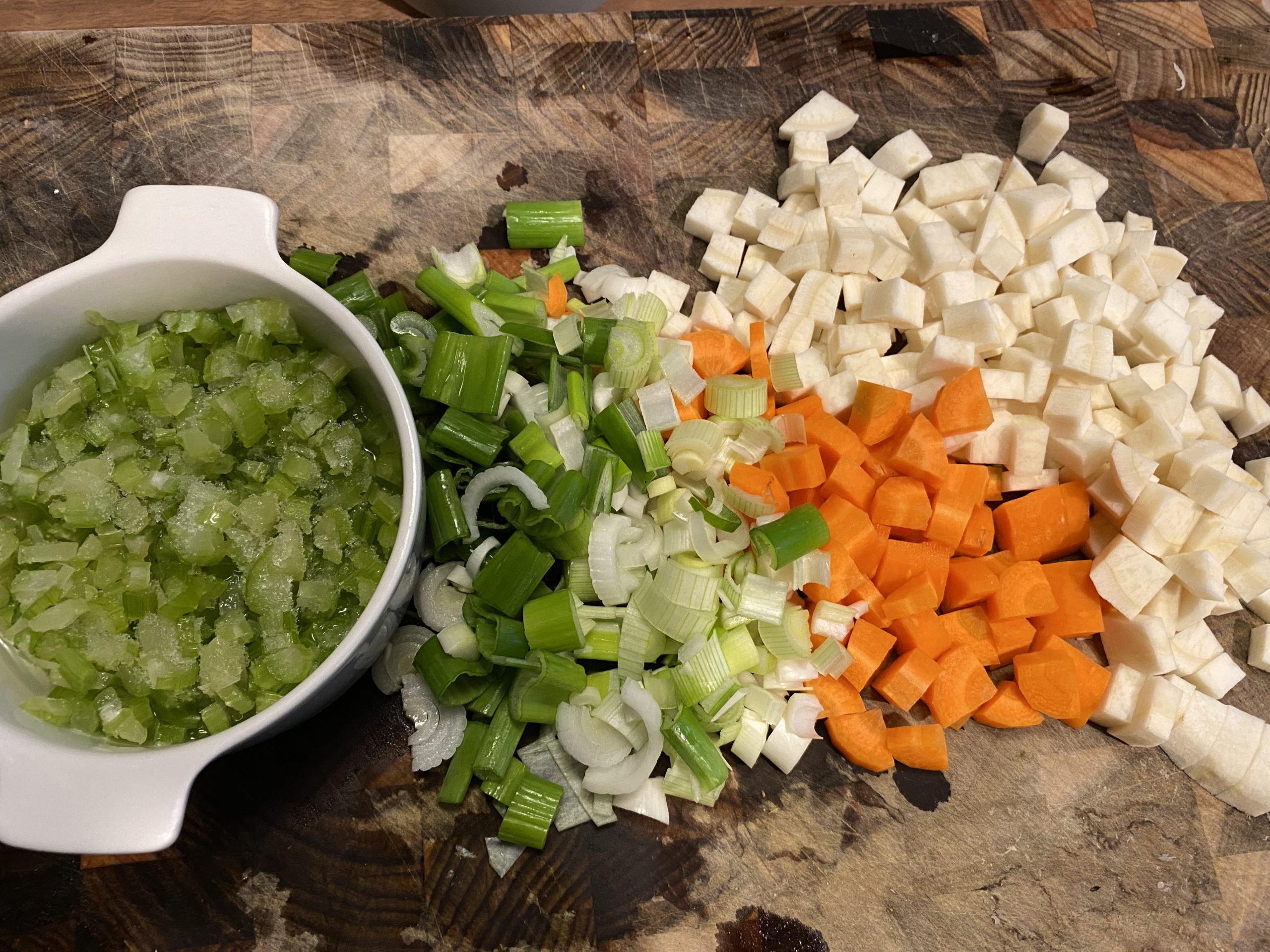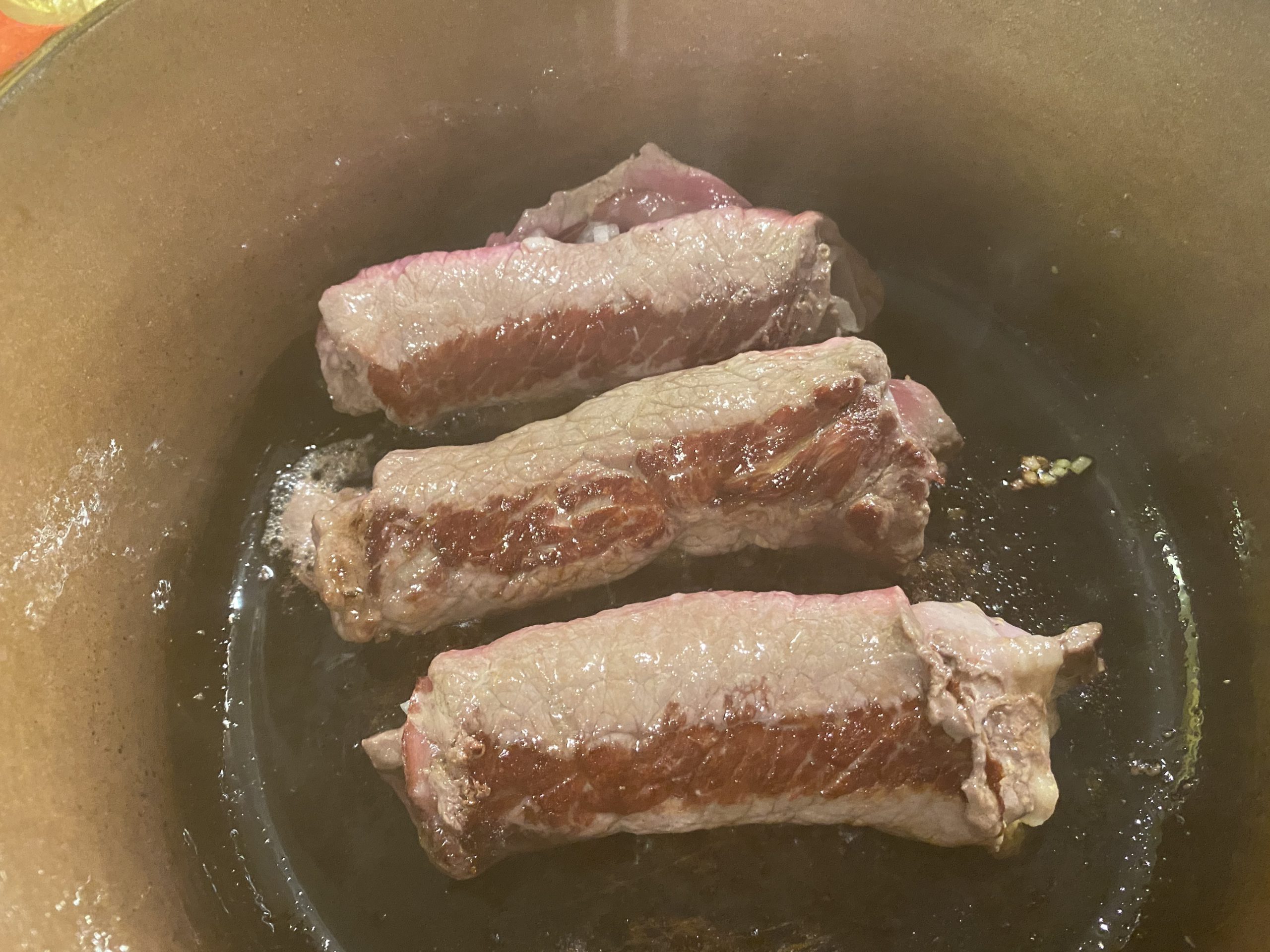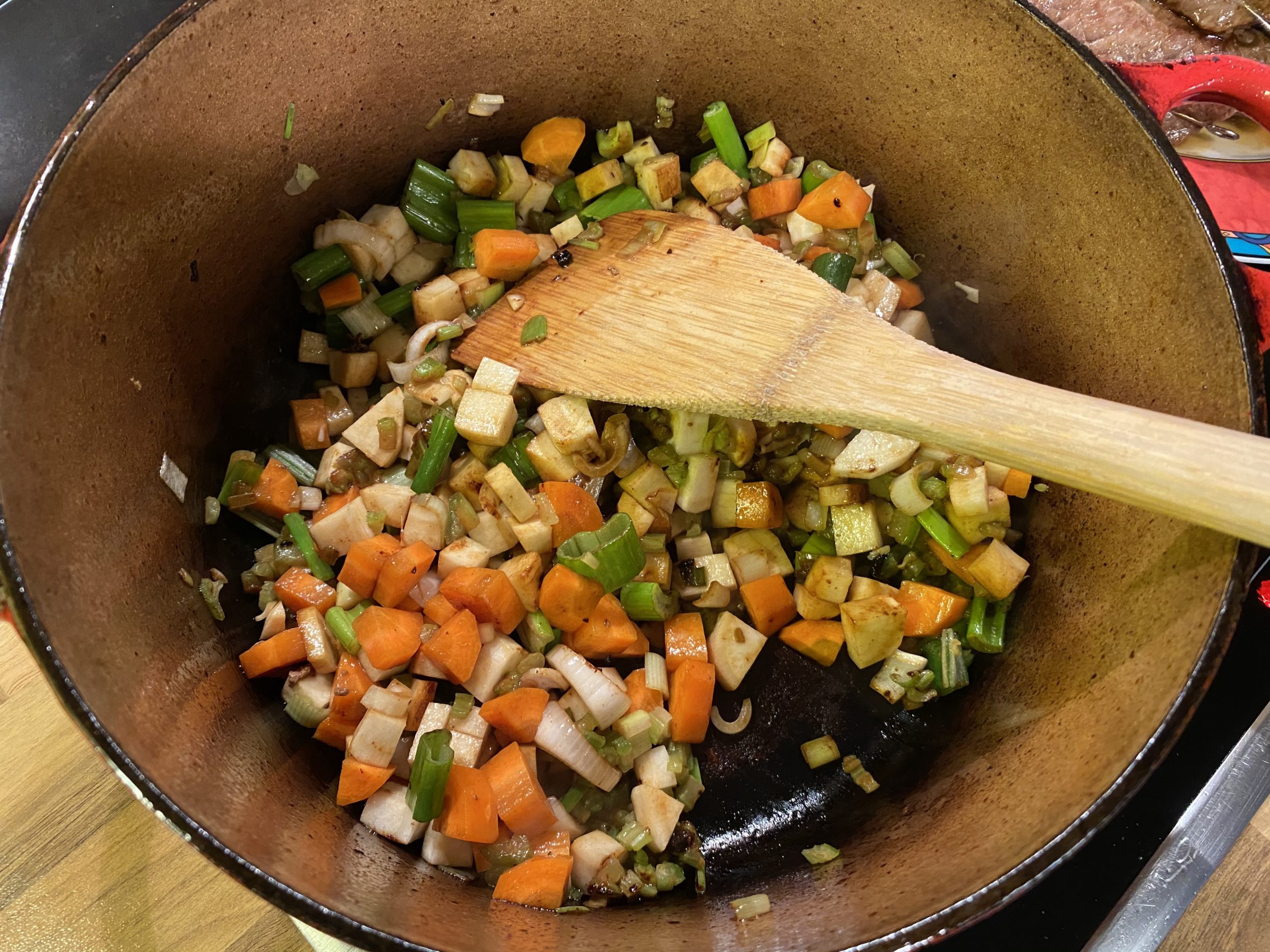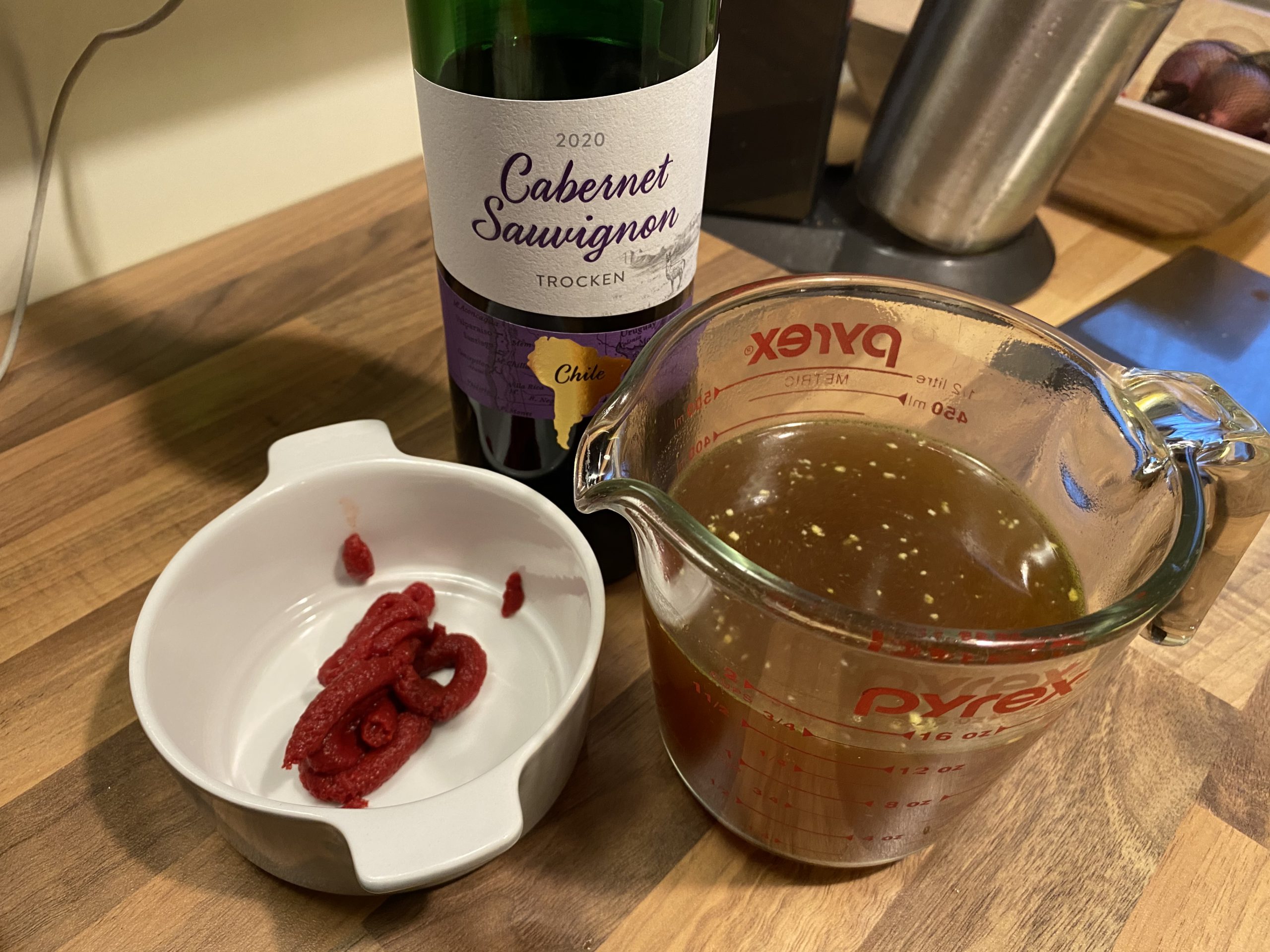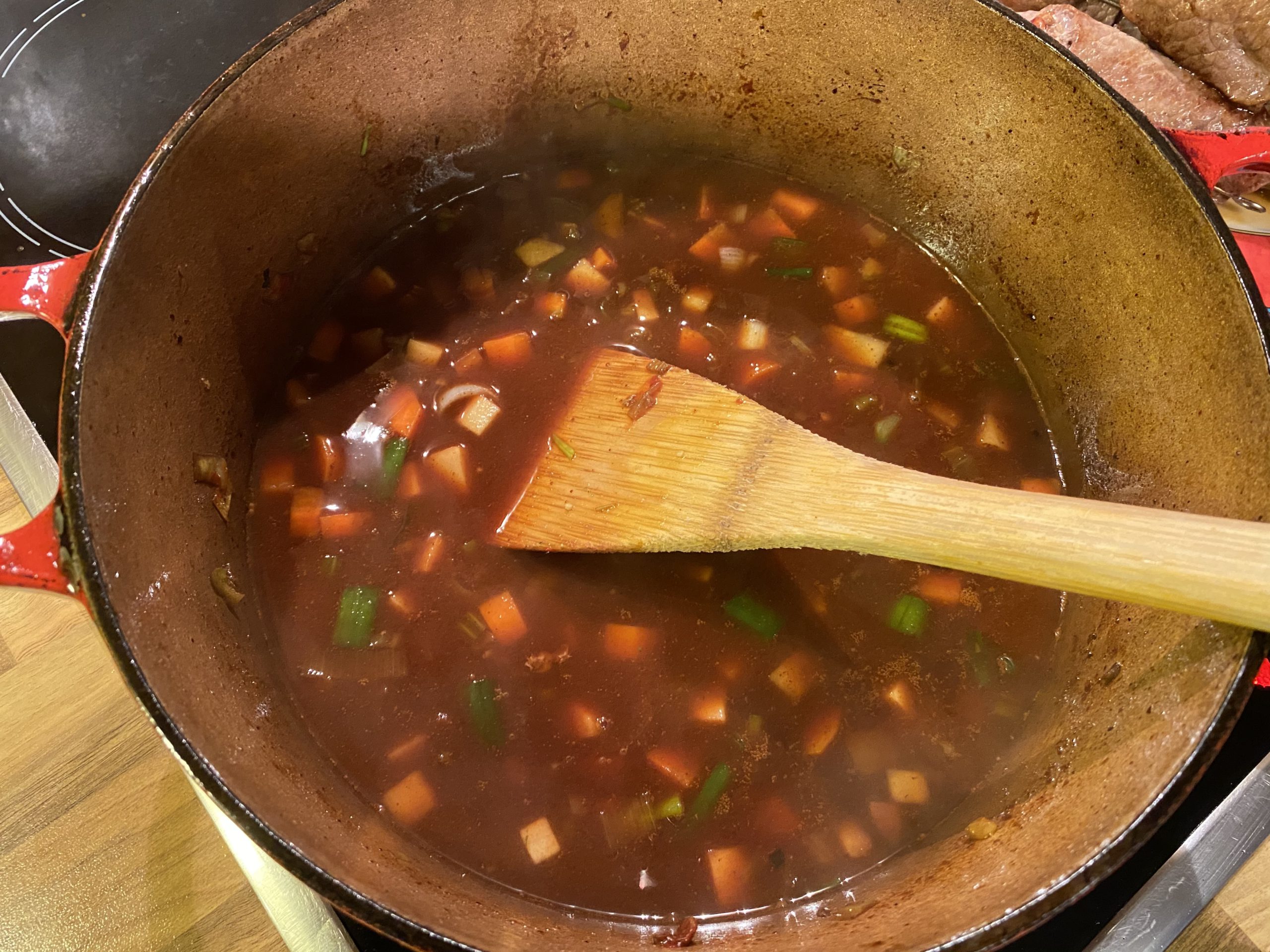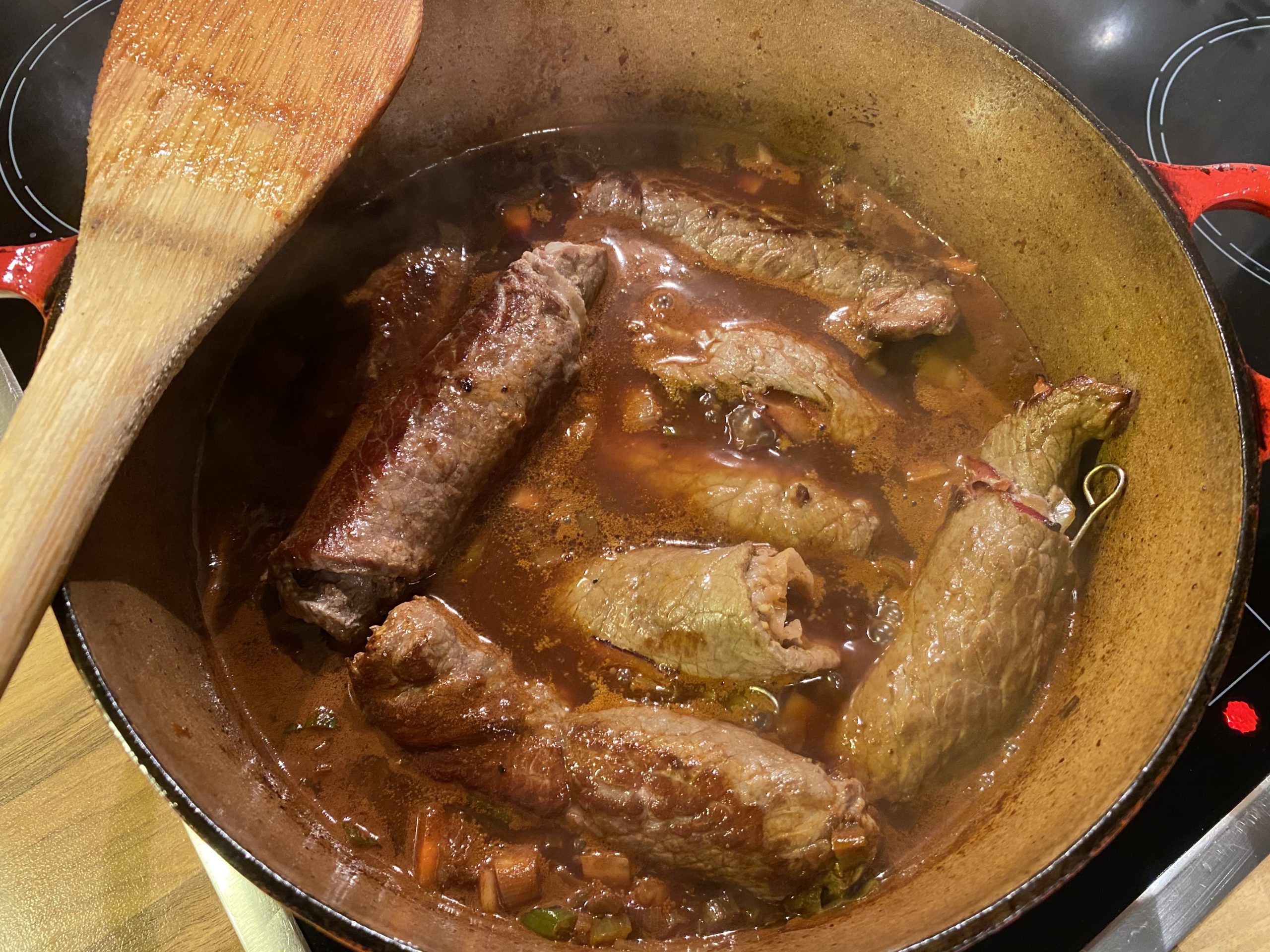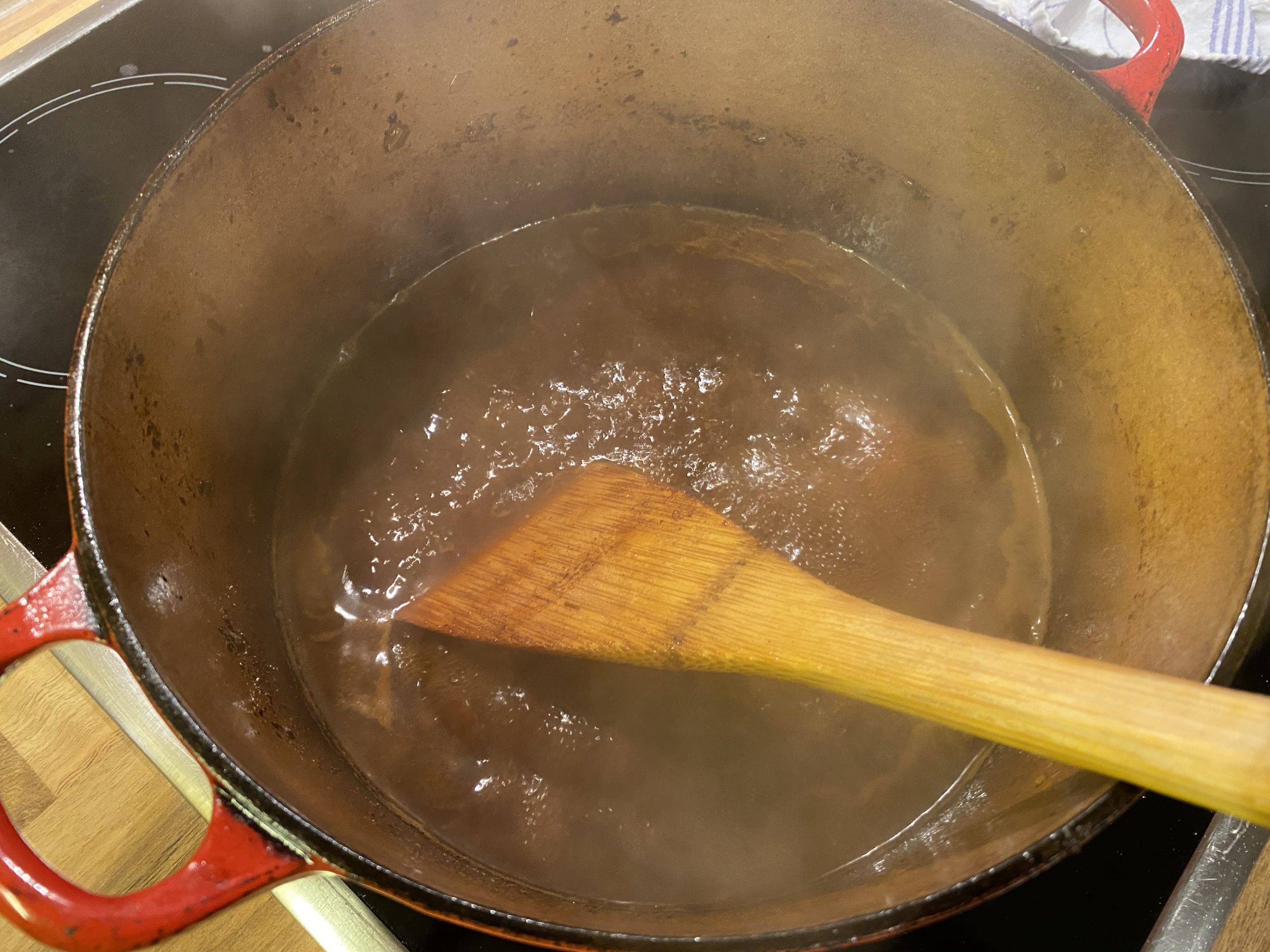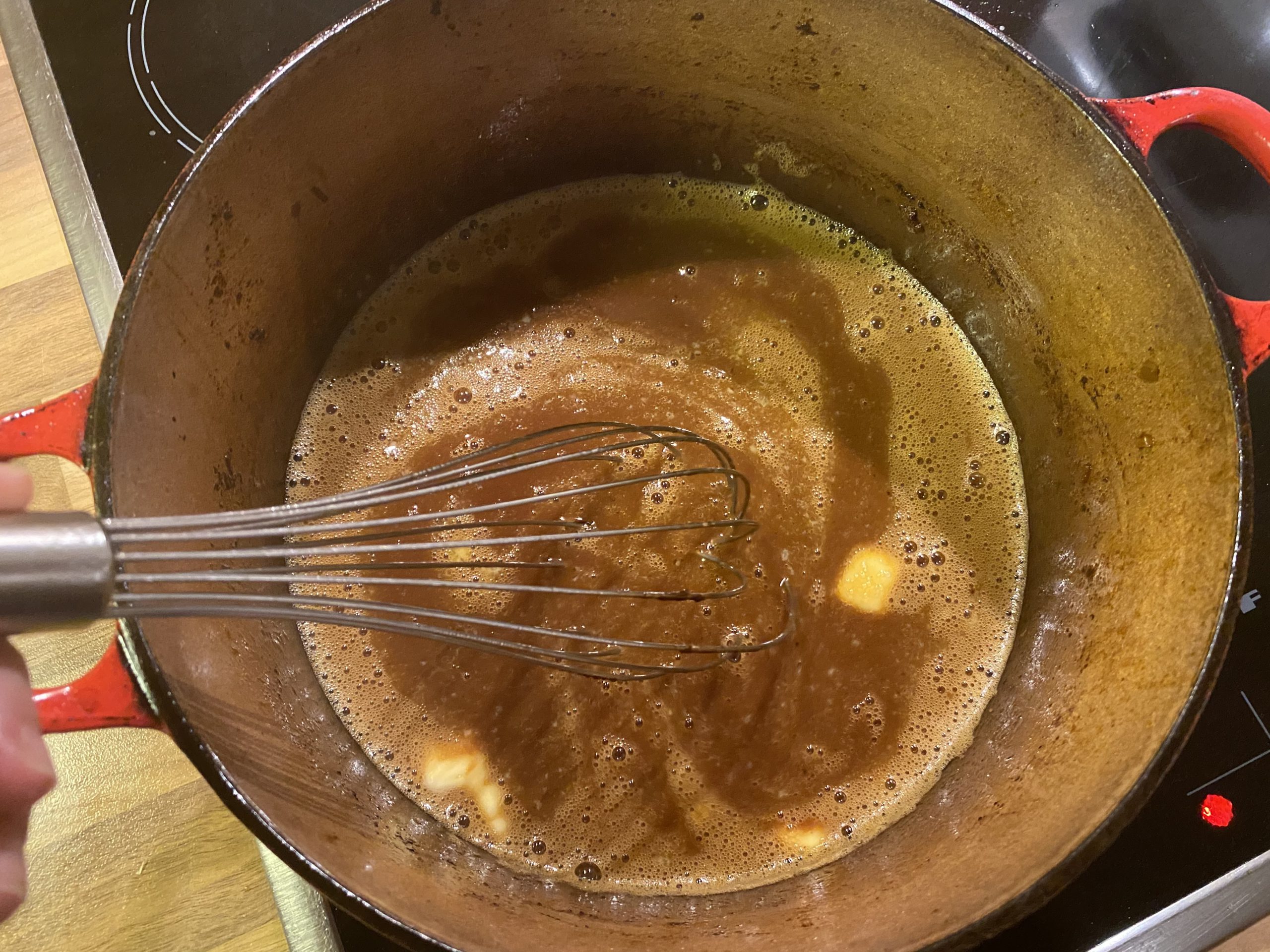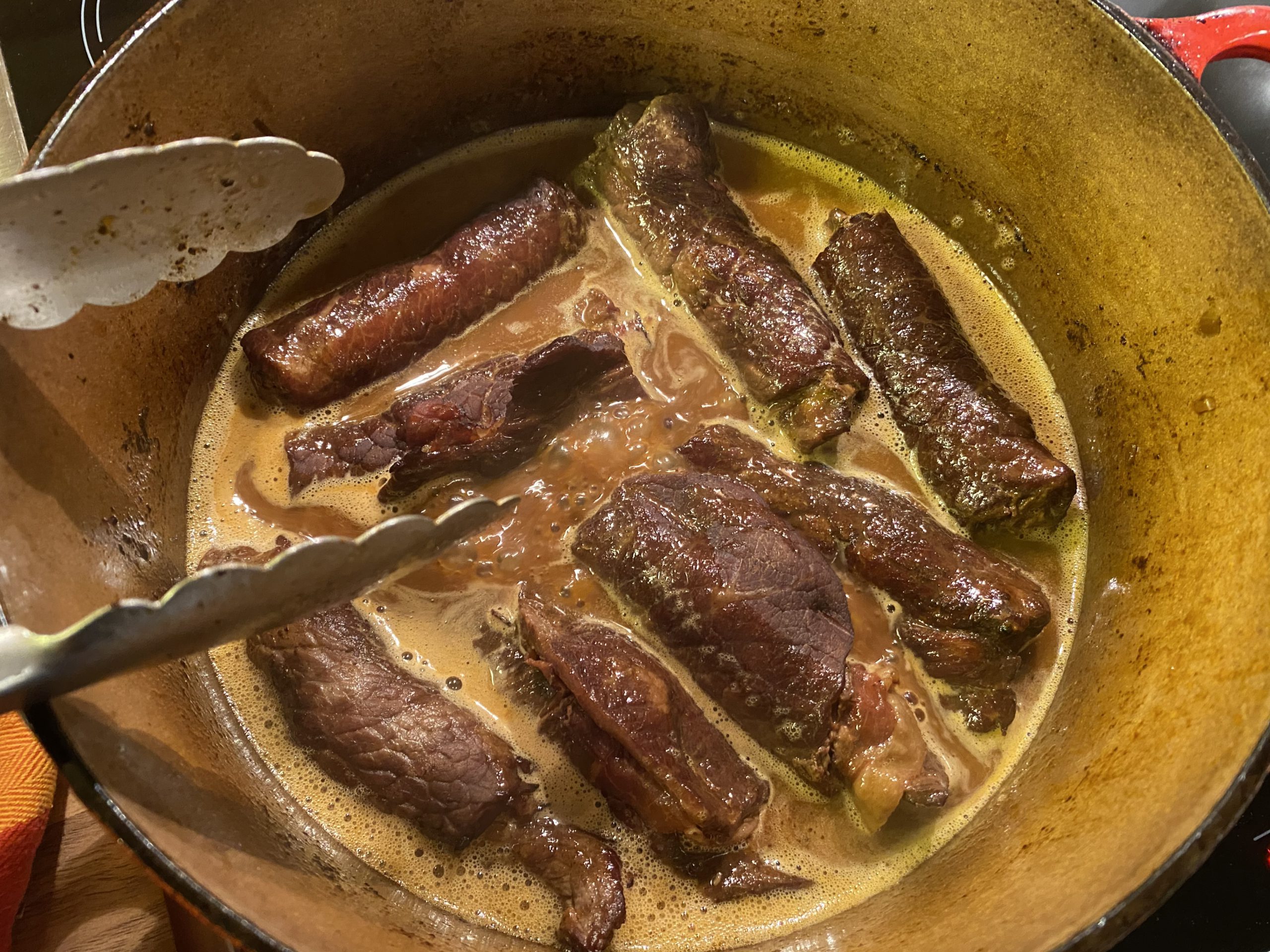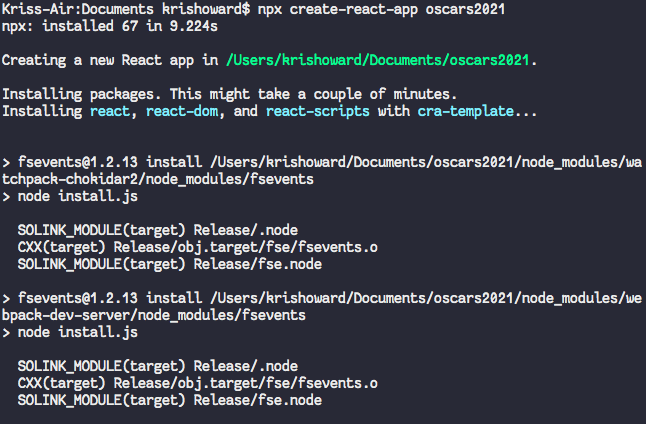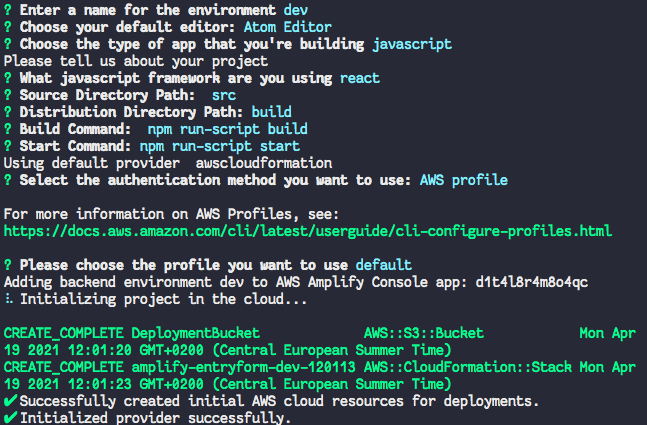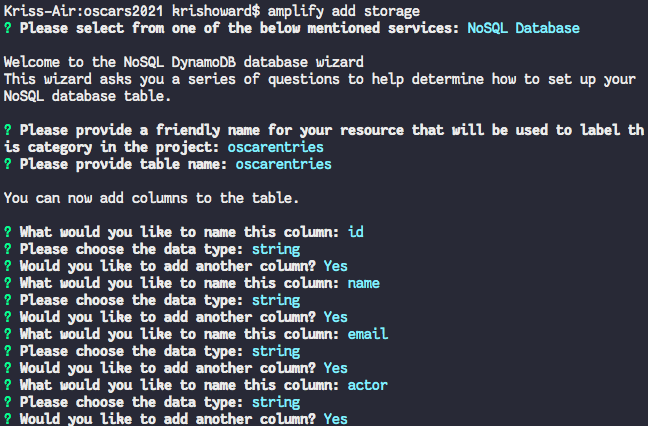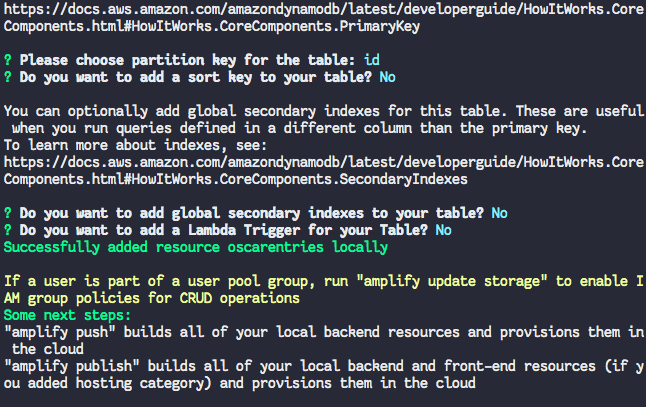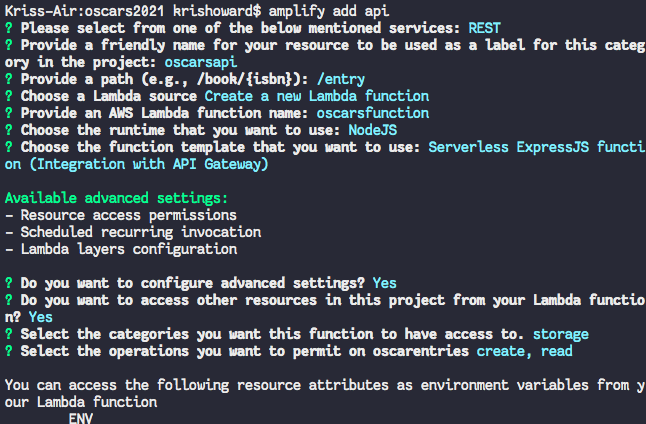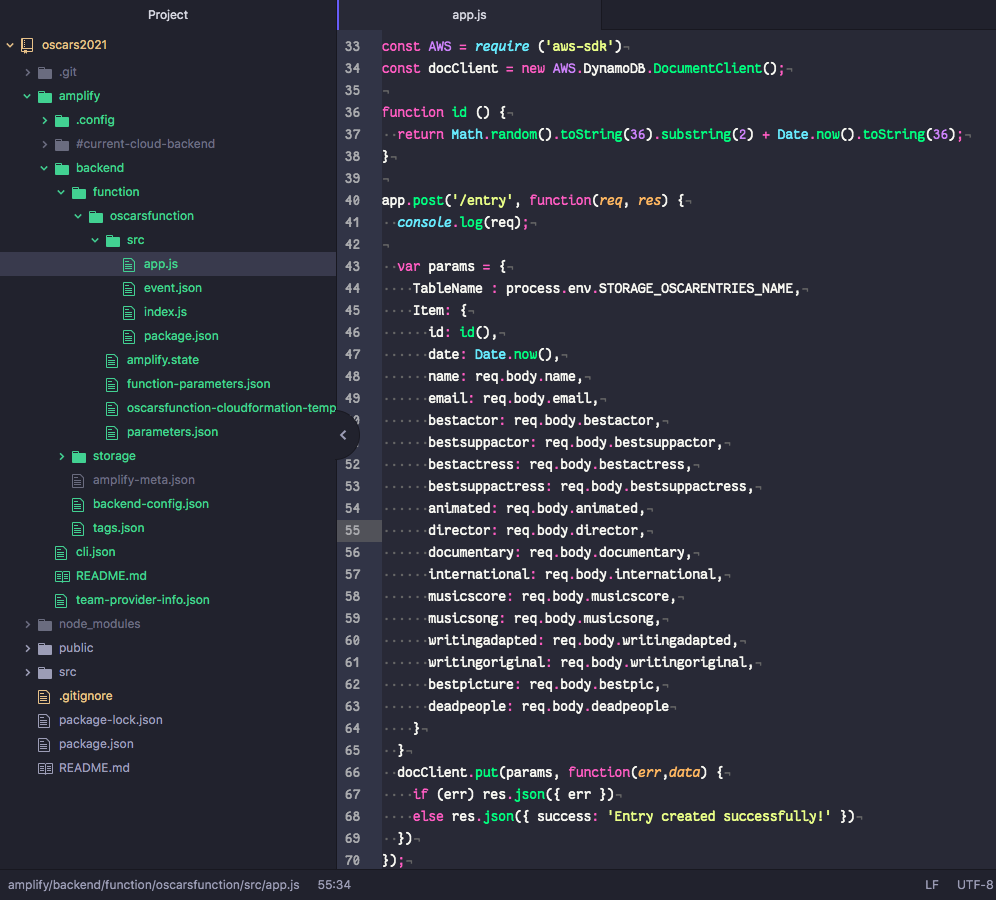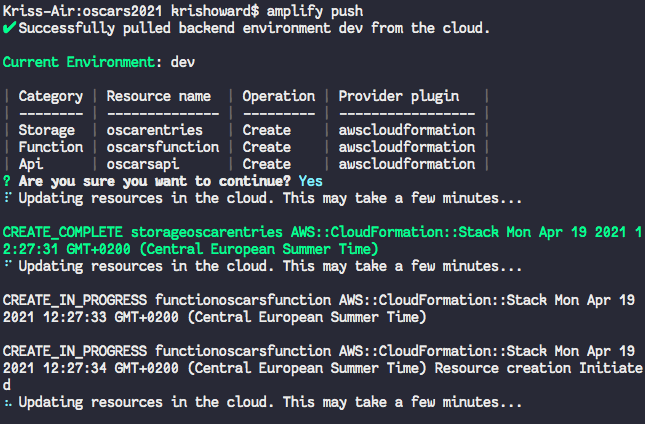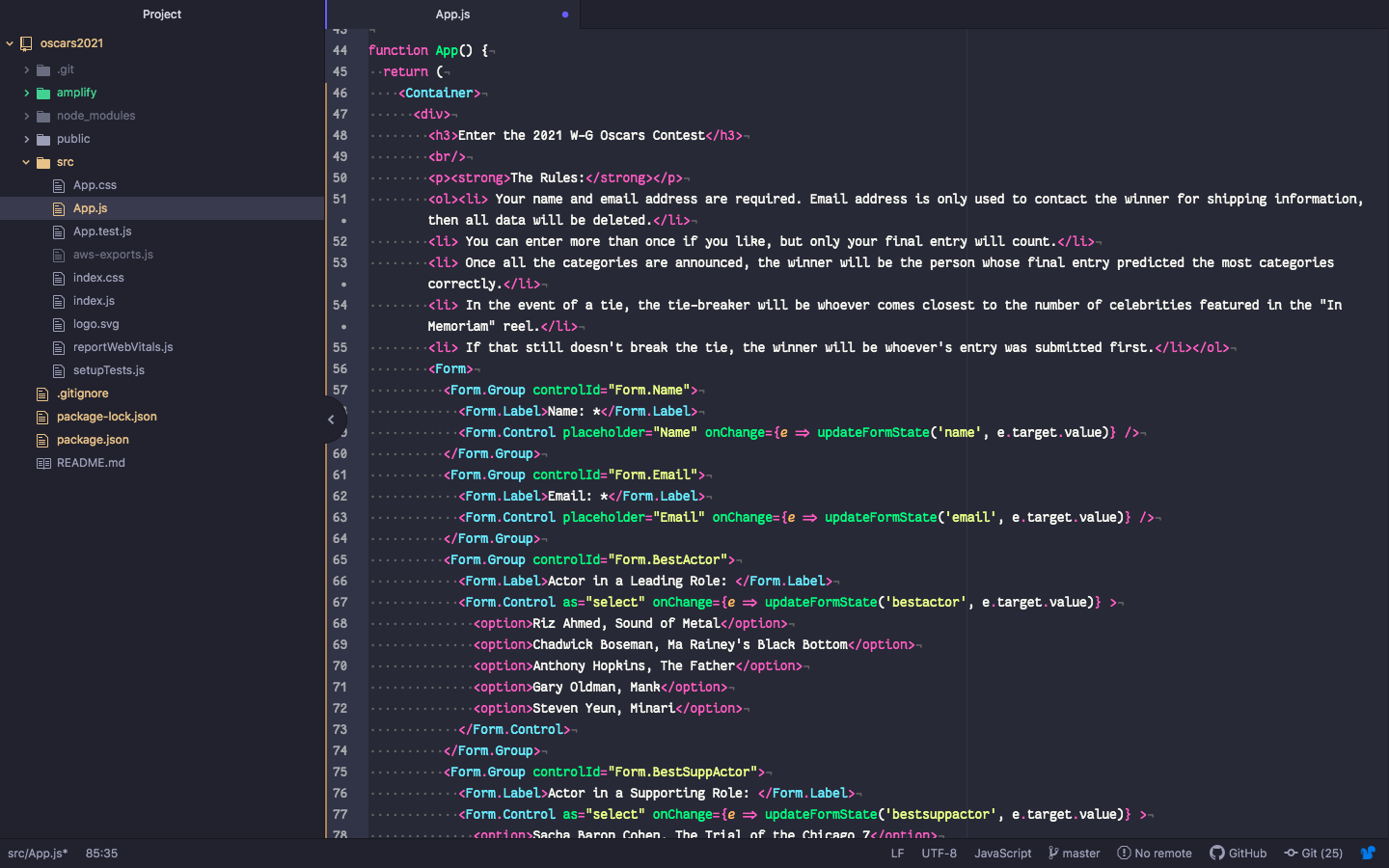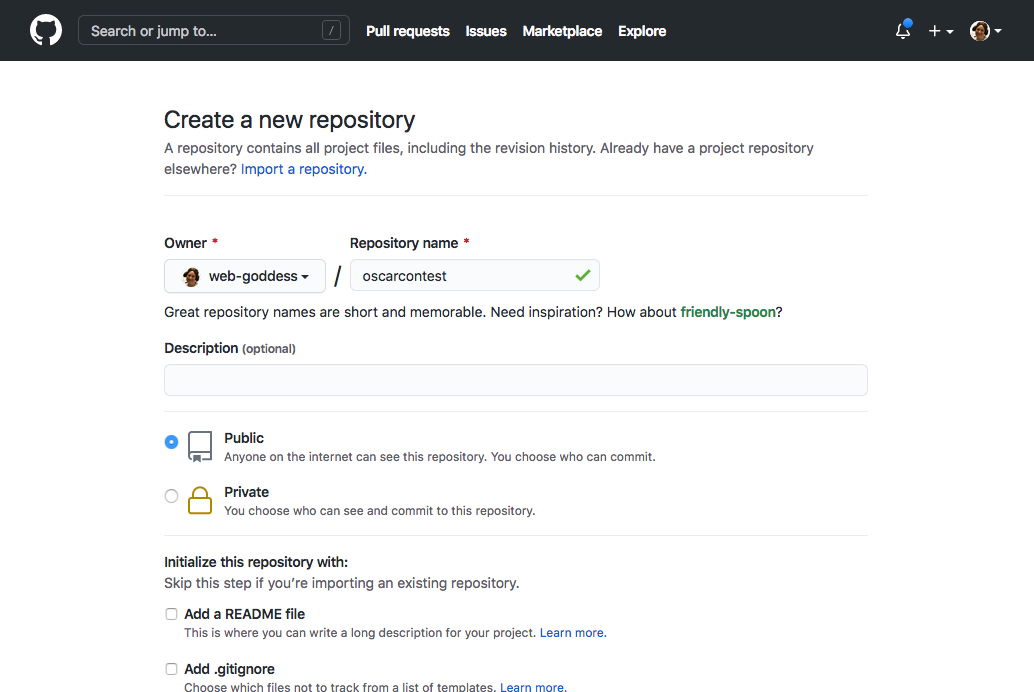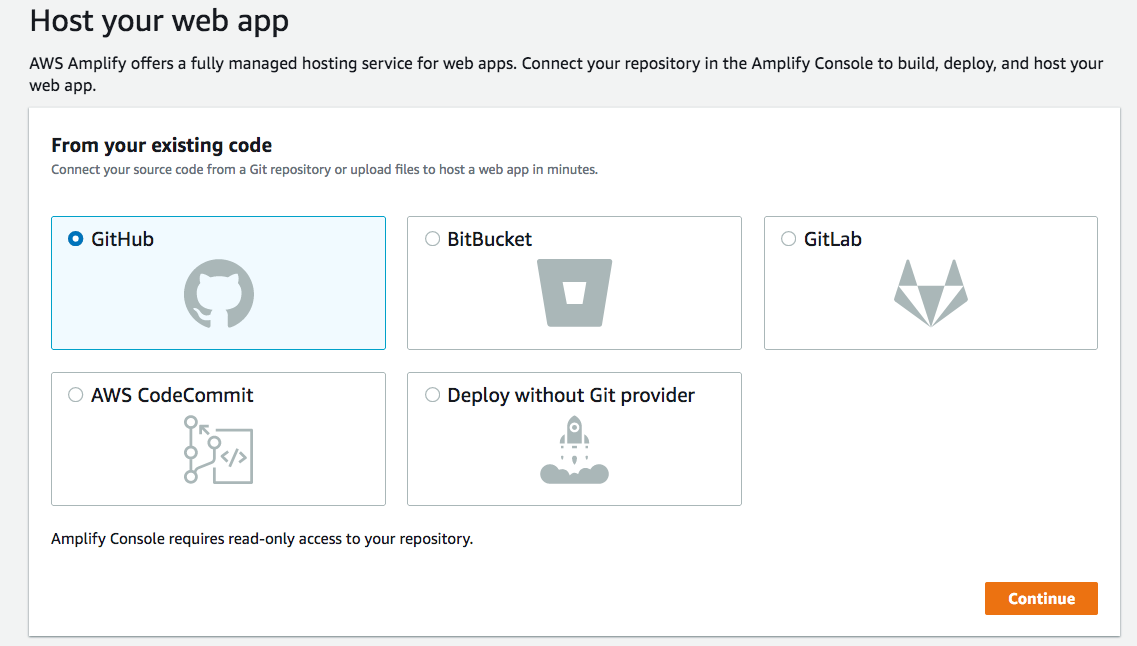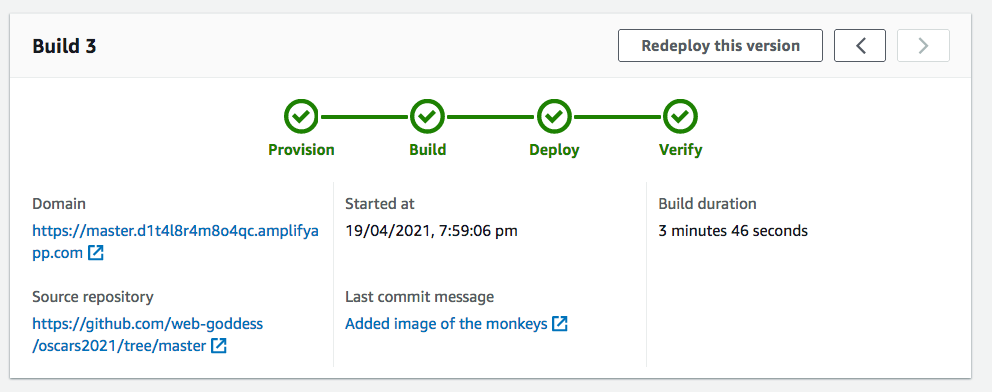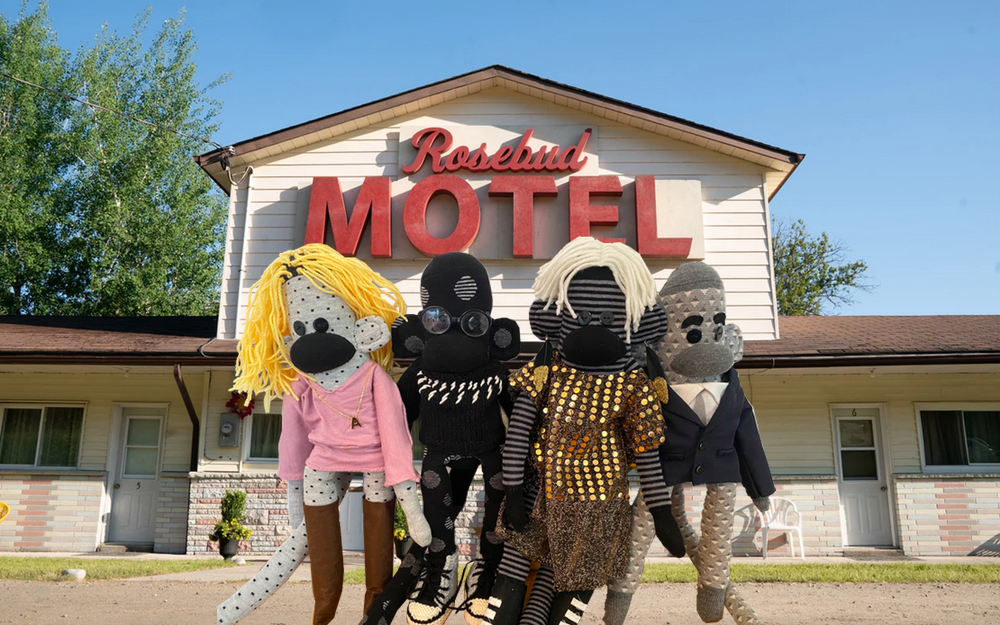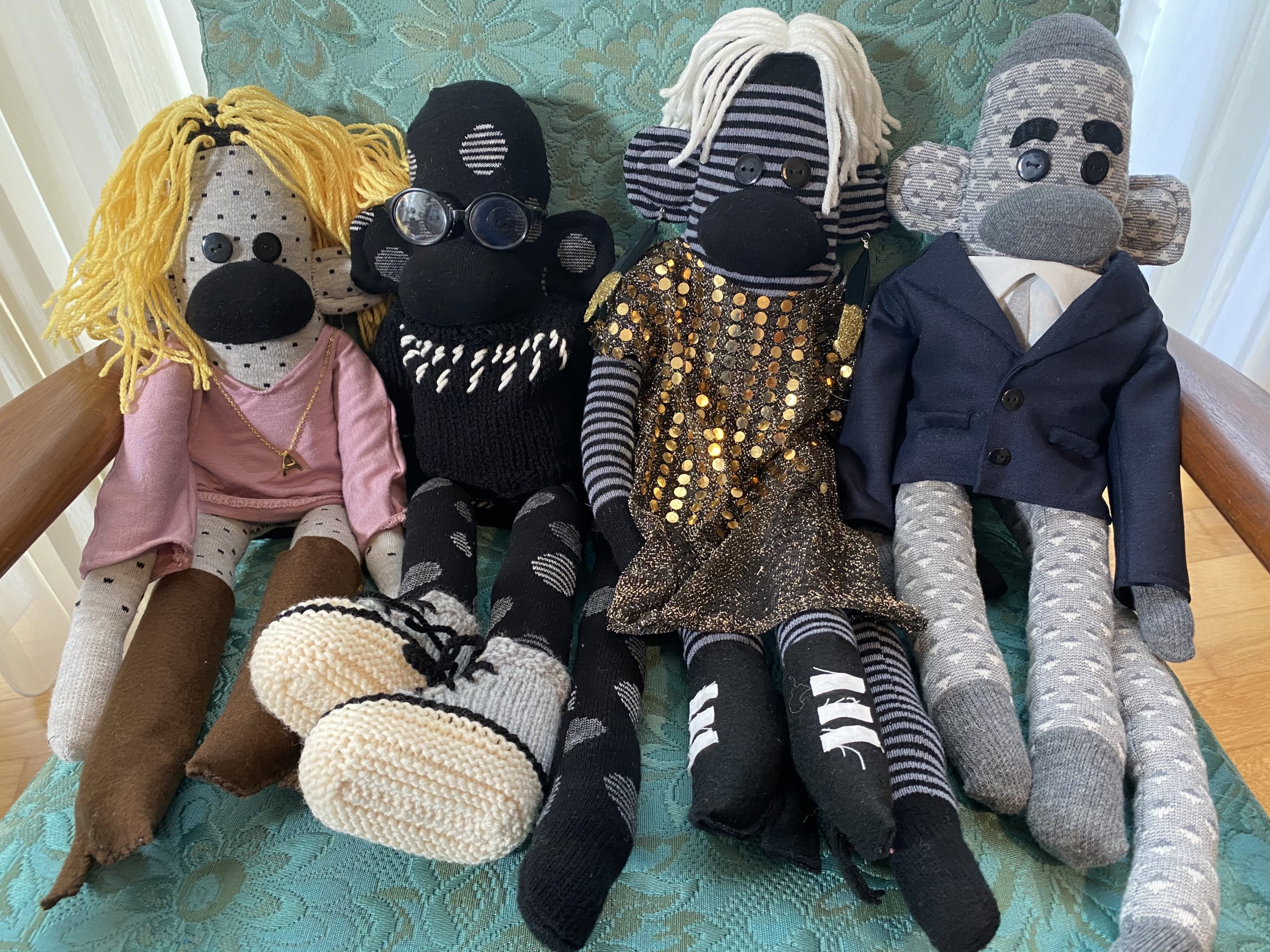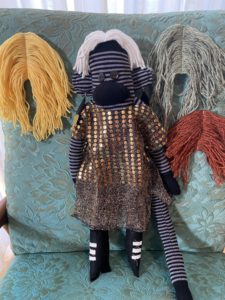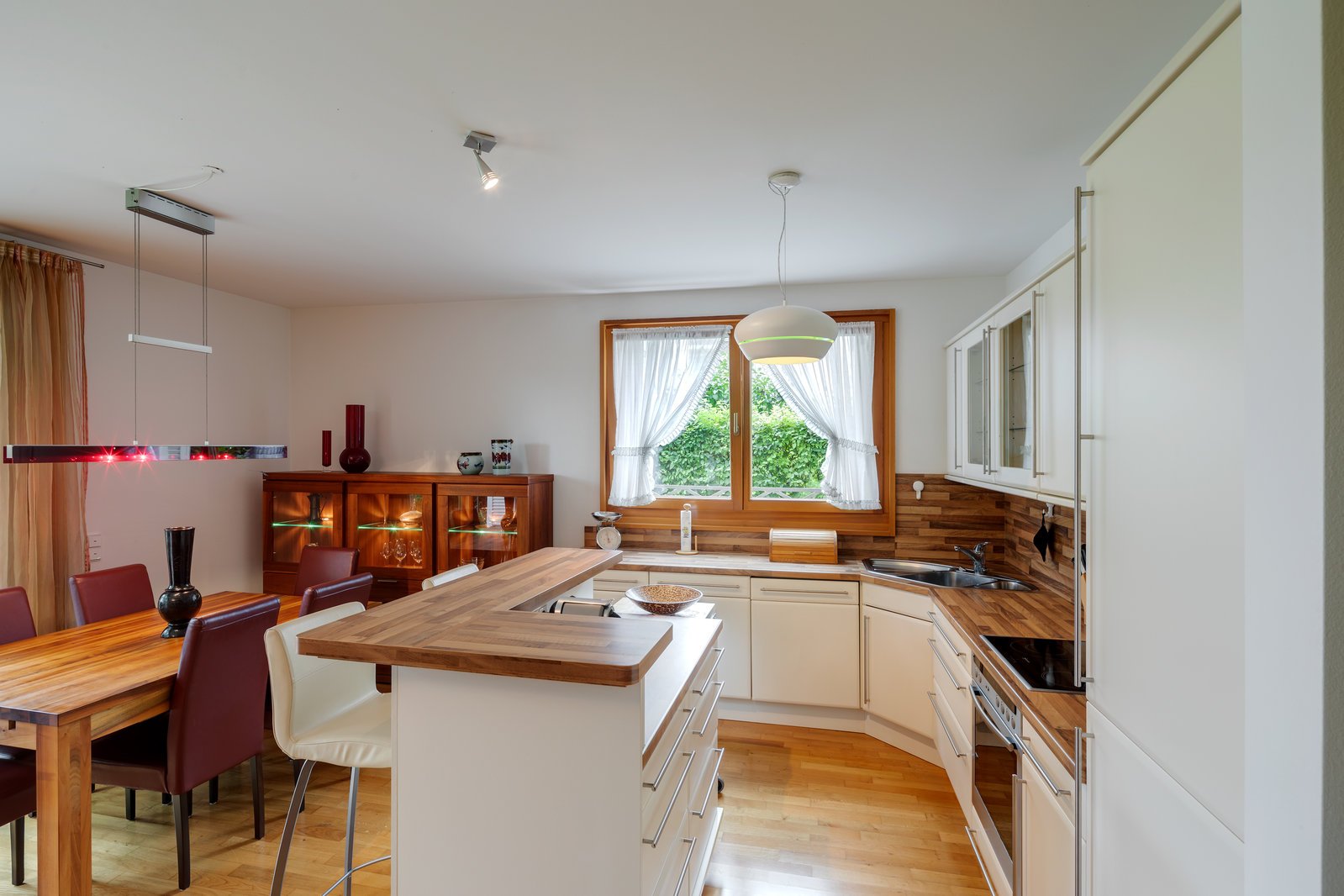When you’re living the expat life, I don’t see a lot of point in only eating the things you did back home. If you didn’t want to try new things, what was the point of leaving in the first place? When I did a semester in London in college, I remember one girl would only eat from American fast food restaurants, and I was livid that she took a spot from someone that would have appreciated the experience more. I swore that would never be me. So when we got to Germany, I spent some time researching classic German dishes that we could try to recreate.
Rouladen was one of the first*, and I’ve made them several times since. They’re rolled up beef parcels with bacon, onions, mustard, and pickles. Um, YUM. After my first attempt, I bought special Rouladennadeln, little metal skewers you can use to secure the rolls without having to tie them with string. I figured I’d document in case you’d like to try it yourself!
I’ve used a few different recipes I found online, but the most recent was this one from Edeka (our local supermarket). In addition to the beef (more of that in a second), the main ingredients are mustard, pickles, onions, sliced streaky bacon (I used this thin smoked ham), carrot, parsnip (or “parsley root”), leeks (I subbed in some very chunky green onions), and celery (mine is defrosting as the Snook likes to freeze pre-chopped baggies of it).
Here’s the beef itself. My understanding is that it’s slices of topside or silverside. Pretty much every German meat counter has a hunk of beef sitting there marked “Rouladen” and the butcher will happily slice off bits for you. My local store actually has pre-sliced bits wrapped up in cellophane, so I grabbed four of them. They were so large that I actually sliced them in half, into 8. If your slices are thick you can pound them thinner, but these were close enough to the recipe’s 0.5cm that I didn’t bother.
You start by spreading some mustard on each of the pieces of beef, then sprinkling with salt and pepper. Then you layer on the bacon, onions, and pickle. Technically this recipe wants you to slice the onion, but I misread and minced mine as a previous recipe had had me do. I think I’ll try the slicing next time, as I’m guessing it’s easier to keep the onion inside when you roll them up. For the pickle I sliced each one into quarters. Another recipe also had me used thin carrot sticks too, but this one left them out.
Those are my Rouladennadeln (roulade needles). Fun, huh? Time to roll up the Rouladen.
Look, I’m obviously not a 70-year-old Bavarian Grandmother who’s been doing this her whole life, but I’m pretty proud of this, okay? 😊 You can also tie them up with kitchen string, or use toothpicks to secure. (That’s what I did the first time, but it’s hard to keep the toothpicks from breaking.)
Now to prep the veg. Everything is chopped up into little bits.
Now it’s time to brown the Rouladen in some oil. I used our cast-iron casserole, but you could also just use a big pot. I only did a few at a time and tried to let them get a nice bit of crust.
Once you’ve browned the meat and set it aside, you dump all the veg in the pot and cook it until it softens.
You need a few final ingredients: tomato paste, red wine, and beef stock. You add the tomato paste to the veg and cook for a bit, then deglaze with the wine. Then you stir in the stock.
Nice rich sauce for our Rouladen!
The Rouladen go back into the pot, and the whole thing simmers with a lid on for 45-60 minutes at low heat.
When the Rouladen are done cooking, you pull them out and place them in the oven to keep warm. Then you strain the veg out of the sauce (and chuck it away!), and let it boil down a little to thicken.
And because “hey, why the hell not, we’re in Germany!”, you further thicken the sauce by whisking in 100g of cold butter cubes. Hells yeah.
Now you can put the Rouladen back in the sauce before serving. I also pulled out the Rouladennadeln at this point.
And that’s it! Traditional German Rouladen.** We served it with steamed carrots and a bit of mashed potato (which had some leftover cabbage mixed in). Very tasty!
* Funny story: I happily announced in a team meeting after my first attempt at this that I’d made “Rolladen” and everybody started laughing. Rolladen are… Venetian blinds. Yeah, don’t mix up the terms. 😂
** I’m sure this is one of those things where there are a million regional variations, so if you’re upset that mine didn’t adhere to your family’s tradition, send me a recipe and I’ll try yours out!


